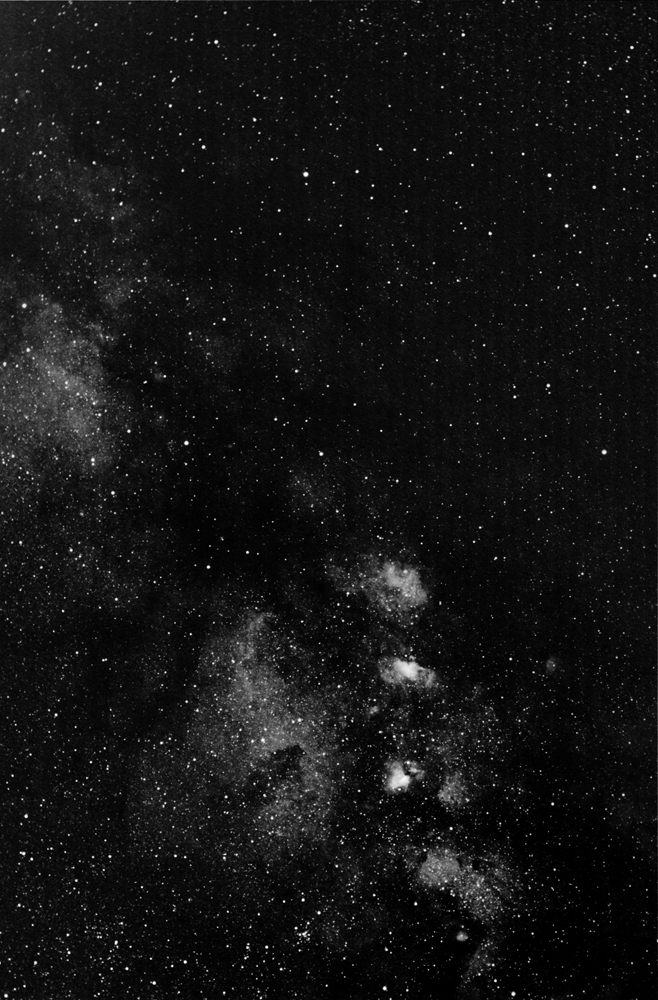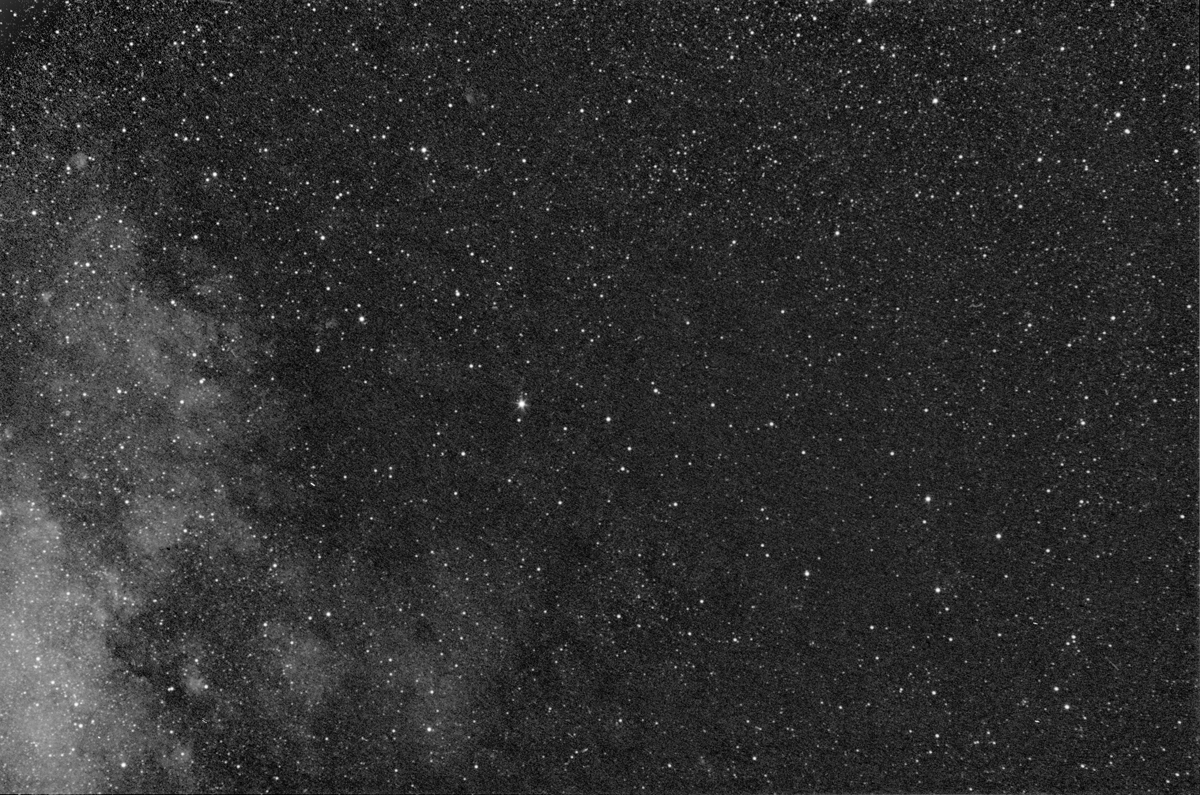
Combination of 20, 3 minute exposures using an H-alpha filter.
SBIG ST-8XE CCD. 50mm Nikon lens at f/4.
Heading northwards from Sagittarius and into Serpens, the Milky Way starts to dim fairly rapidly. However there are still numerous interesting objects in this region, including a number of bright emission nebulae.

Northern Serpens. The bright star is eta serpens.
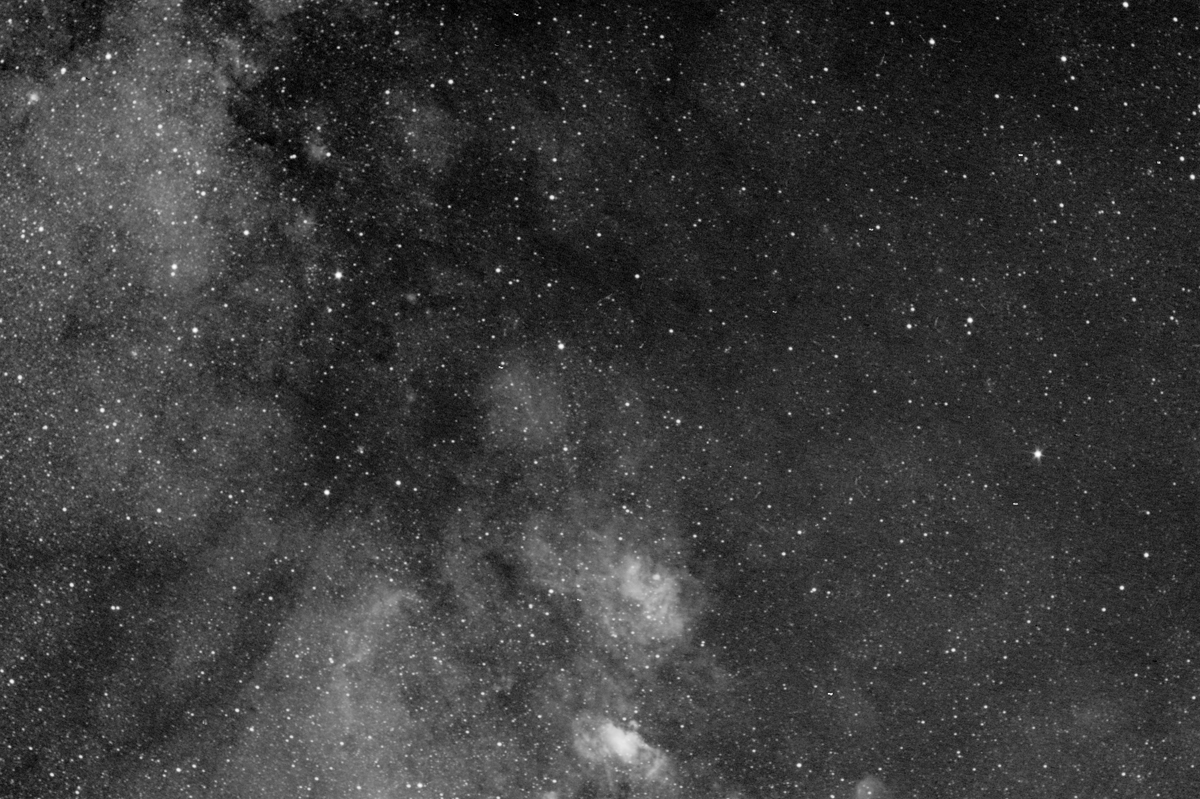
Central Serpens. The bright nebula towards the bottom is M 16 also know as the Eagle Nebula.
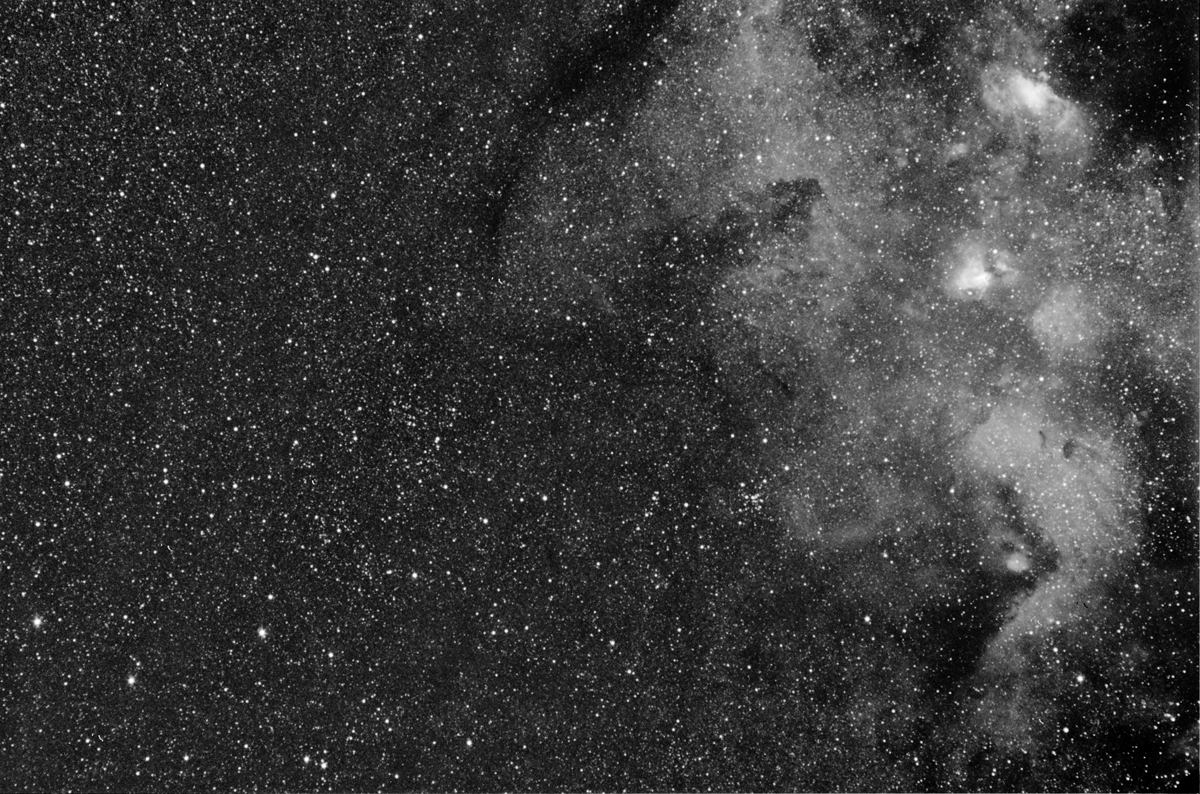
Eastern Serpens. The bright nebula towards the top right are M 16 and M17, also known as the Omega Nebula.
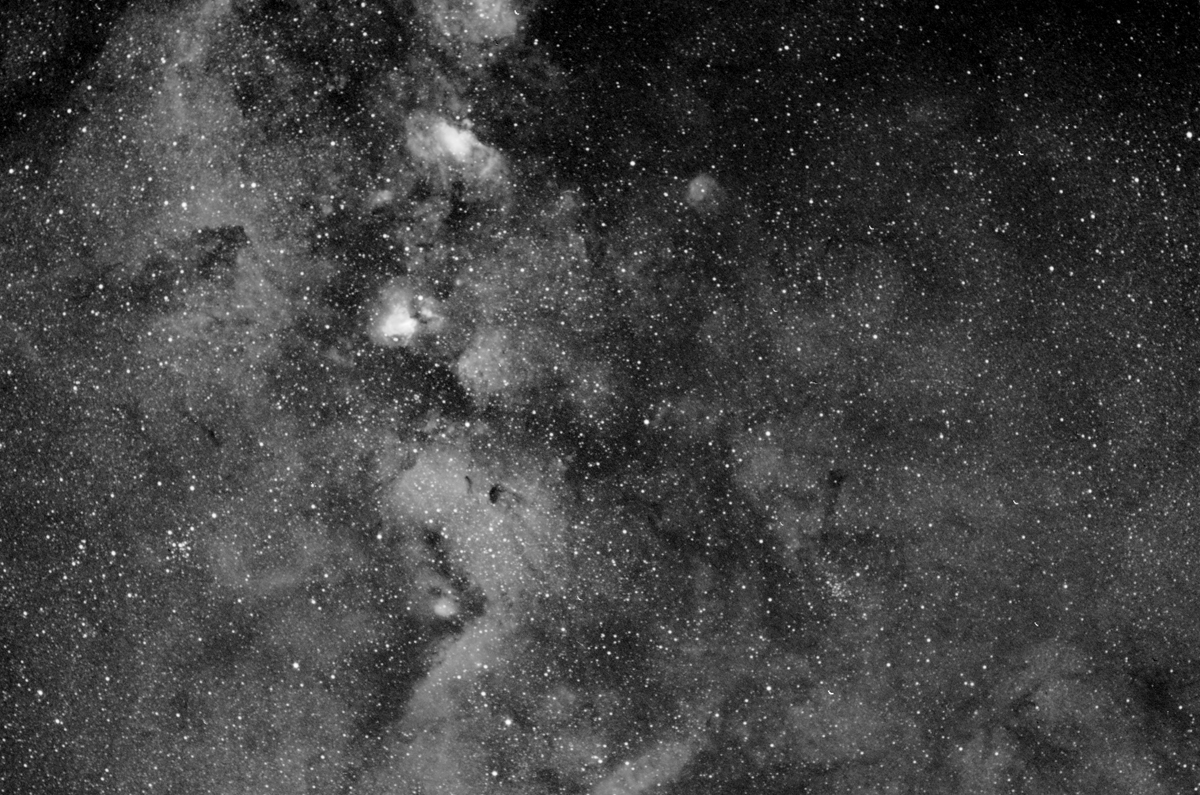
Southern Serpens.
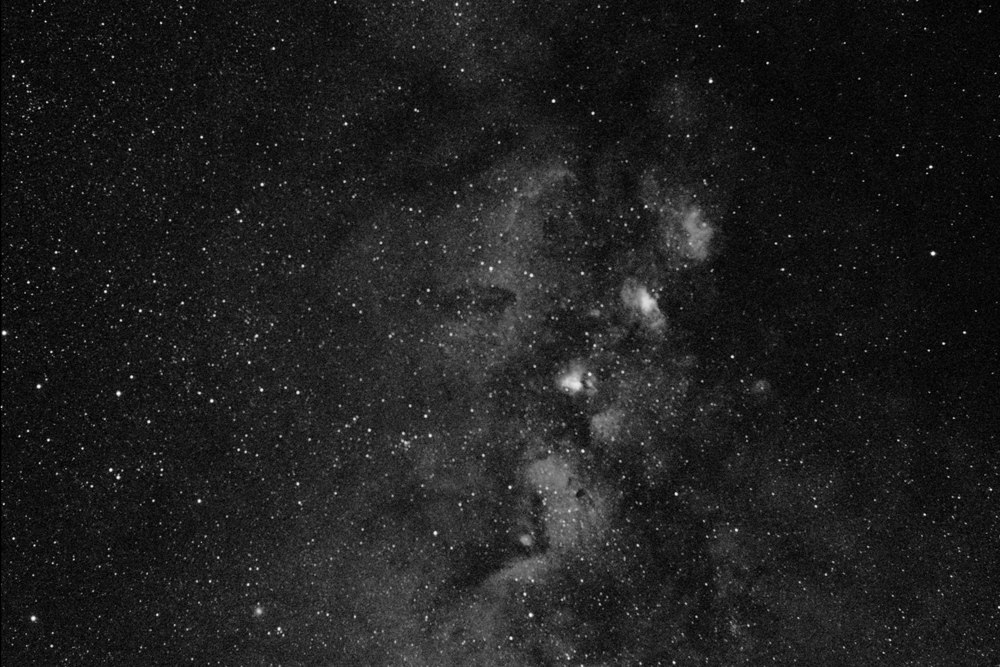
Some of the many emission nebulae and open clusters in the region are shown in the image above and marked below.
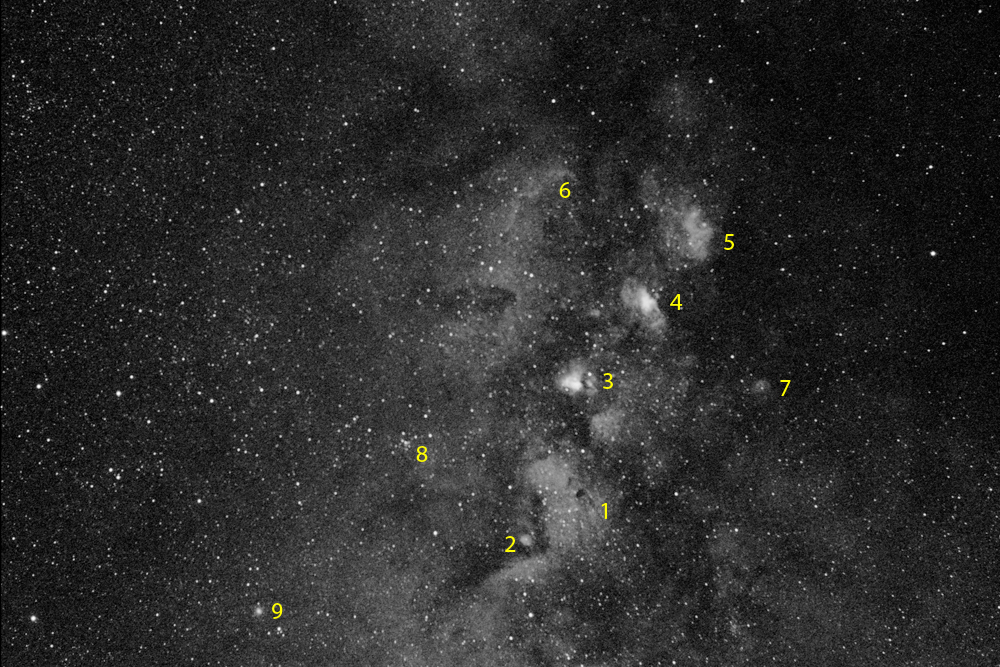
| Number | Name | R.A. | Dec | |
| 1 | M24 The Sagittarius Star Cloud | 18 17 | -18 30 | |
| 2 | IC 1283/1284 | 18 17 | -19 40 | |
| 3 | M17 The Omega Nebula | 18 21 | -16 10 | Image |
| 4 | M16 The Eagle Nebula | 18 19 | -13 50 | Image |
| 5 | Sharpless 2-54 | 18 19 | -12 10 | |
| 6 | Sharpless 2-55 | 18 32 | -11 45 | |
| 7 | Sharpless 2-48 | 18 06 | -14 05 | |
| 8 | M25 | 18 32 | -19 10 | |
| 9 | M22 | 18 36 | -23 50 | Image |
